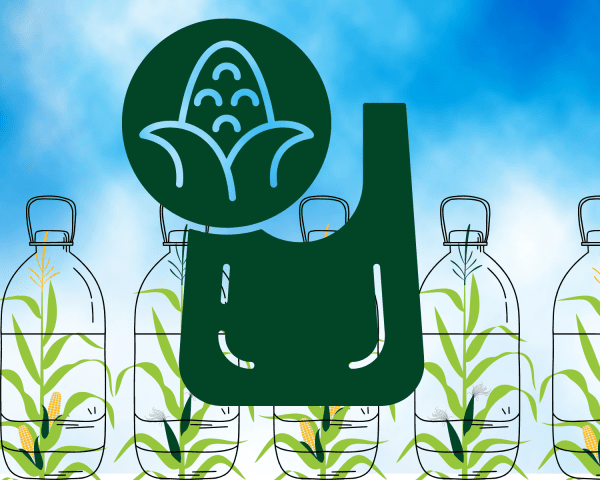What in the husk are corn plastics?

You already know that corn can be a solution to so many of our world’s climate challenges, but do you know enough about each renewable opportunity to explain it to your off-the-farm peers? In this article we explore Polylactic Acid (PLA) or corn plastic.
We all know what plastic does to our environment – that’s why for years scientists have been working and researching ways to make biodegradable and eco-friendly products from renewable resources. Replacing petroleum-based plastics with bio-based plastics could reduce industrial greenhouse gas emissions by 25%, according to a 2017 study. Read more benefits below.
How does it work?
Corn plastic is a non-petroleum material made by converting corn into a resin called polylactic acid (PLA). Mostly made from corn because it’s the most affordable and available, however it can be also made from sugarcane, tapioca root, cassava and sugar beet.
What are the benefits of using corn plastic products?
- Requires 65% less energy to produce than traditional petroleum-based plastics
- Emits 68% fewer greenhouse gases
- Renewable Resource – unlike natural gas or crude oil that’s a finite resource, corn is available, functional and renewable
- Biodegradable – Rather than filling up our landfills, these plastics degrade quickly and can break down even as quick as 45-90 days
- No toxic fumes – When they’re incinerated, bioplastics don’t emit any toxic fumes
- FDA-approved – Generally Recognized as Safe polymer and is safe for food contact
Where can I find products for my purchase or for my business?
Currently PLA (corn plastics) are used often in 3-D printing so a common place to find gifts will be where 3-D products are sold. Containers, cups, lids and straws for restaurants or events are also more easily found. Here are just some examples of places you can find corn based plastic products:











































































































